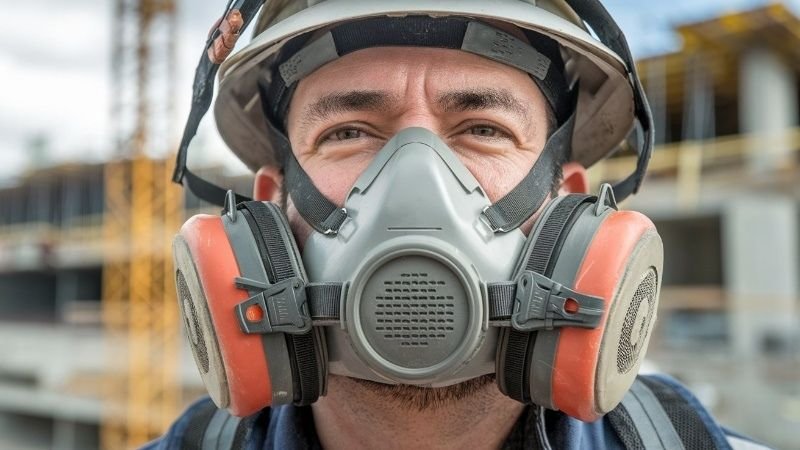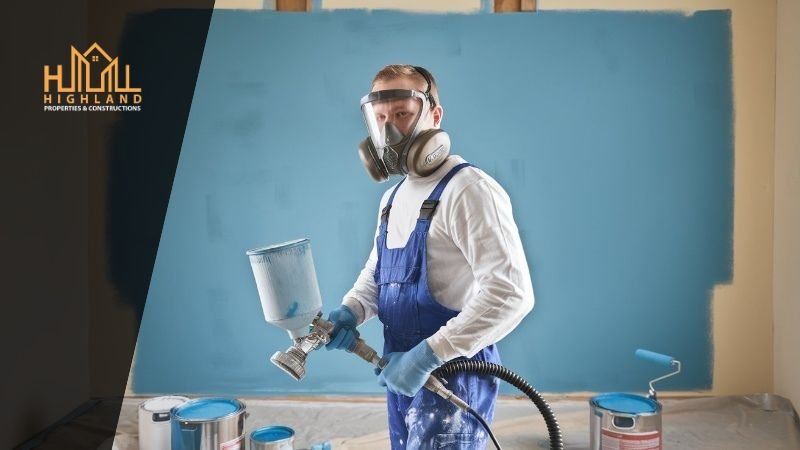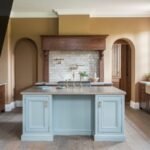Best Respirators for a Safe Paint Work
VOCs (volatile organic compounds) and other dangerous materials are frequently found in paints and coatings and pose significant health risks if inhaled. Ensuring your health safety in paintwork in the presence of fumes, microorganisms, gasses, and dust particles is quite a task. One can not avoid exposure to these harmful chemicals while being a part of the painting process. However, the use of a high-quality respirator can mitigate the risk of getting affected and ensure a safe painting experience. This blog will provide all the essential guidance regarding the benefits of using a respirator and some of the best available in the market.
Before delving into details, let’s first understand the difference between a mask and a respirator. Paint masks work as a barrier and do not let airborne particles reach your respiratory system, whereas respirators not only stop harmful chemicals, fumes, and vapors from entering your respiratory system but also provide safety regarding inhaling the sharp odor of paint primers and paints.
Types of Respirators
Before diving into specific models, it’s essential to understand what a respirator does. Respirators are protective devices designed to remove dangerous gases, particulates, and vapors from the air you breathe. They are essential in environments where chemical exposure is a concern, such as during painting projects. Respirators come in two primary varieties: disposable and reusable, each with advantages and ideal use cases.
Also Read: How Much Does Professional Paint Work Cost in Pakistan
1- Basic Respirators
Supplied air and air-purifying respirators are the basic respirators. Supplied-air respirators provide air either from an air tank or manage to convey fresh, contamination-free air away from the hazardous place. Purifying respirators don’t provide air from somewhere else; they purify the air from all harmful components.
2- Disposable Respirators

This kind of respirator is disposed of after a single use, and another is used for the next time. These are also known as N95 masks. These respirators are designed to filter out airborne pollutants, including dust and fumes. While they are effective for essential protection, they often fall short when dealing with the chemical vapors in many paints. A filtering facepiece is a kind of disposable respirator. It only protects against dust or smoke and provides purified air through filtration. Moreover, the filtering facepiece only covers the mouth and nose.
3- Reusable Respirators
Elastomeric and powered air-purifying respirators are reusable respirators. These are more robust and consist of a facepiece that covers the mouth, eyes, and nose. They can be cleaned and reused with replaceable filter cartridges. They offer superior protection against all airborne particles, gases, fumes, and vapors. Therefore, they are generally preferred for tasks involving paints and solvents.
Key Features to Look for in a Respirator
Consider the following features while selecting a respirator for the paintwork.
1- Filter Type
To accomplish your paintwork safely, choose a respirator equipped with filters designed to handle volatile organic compounds (VOCs), vapors, fumes, and chemicals. Therefore, to obtain a high-quality respirator, look for models with filters rated for VOCs and particulate matter. For instance, P100 filters are highly effective for dust and other particulates, while cartridges with an organic vapor (OV) designation are crucial for chemical fumes.
2- Respiratory Comfort
Choose a respirator that makes breathing comfortable while painting. A good respirator has an exhalation valve to lessen the buildup of water and heat inside the mask, which makes breathing comfortable and also ensures overall ease.
3- Consider Your Comfort and Fit

Ensure your comfort with the respirator, as you will have to wear it for hours. Select a respirator that offers adjustable straps to adjust it according to your face size. Ensure a good seal around the face to prevent any leakage. Moreover, a well-fitting respirator also enhances its effectiveness.
4- Durability
Make sure the product you are purchasing is durable. Although reusable respirators are built to last, their construction and material quality may vary. To resolve this issue, look for reputable brands known for their durability and reliability.
Tips for the maintenance of a respirator
1- Store the respirators in dry, clean, chemical-free places with moderate temperatures.
2- Do not use a respirator on a bearded face, so ensure facial hair removal before its use.
3- Follow the cleaning instructions provided by the company.
4- Ensure a proper fit and check the seal while using it.
5- Keep a regular check on the performance of your respirators.
Conclusion
Choosing the best respirator for paint work involves considering your work type, the specific hazards present, and your personal comfort. Whether you opt for a half-face or full-face model, ensure it meets the necessary safety standards and provides adequate protection for organic vapors and particulates. With the proper respirator, you can confidently tackle your painting projects while safeguarding your health and ensuring high-quality results.
Best Respirator for Paint Work – FAQs
Q1- What are the best respirators for automotive painting?
Ans: There is a range of respirators available for automotive painting on the market today. Of the reusable options, 3M Paint Project Respirator and ZYC 7 are the most reputable.
Q2- Which respirator is recommended for painting?
Ans: Some of the most recommended respirators for painting are N95 masks and 3M safety 142-6100. N95 is a trendy choice to avoid dust particles and airborne pollutants while painting.





Leave a Reply